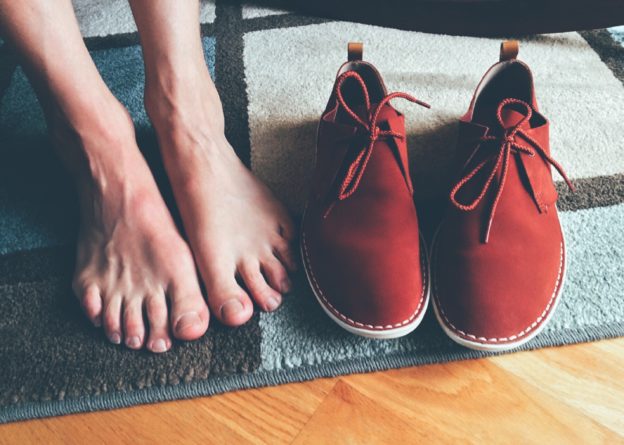New Wearable Sensor to Help Prevent Diabetic Foot Ulcers
 By:
By:  Tags: diabetic foot ulcer Foot and ankle clinic Los Angeles Foot Clinic California
Tags: diabetic foot ulcer Foot and ankle clinic Los Angeles Foot Clinic California A new sensor developed by researchers in the UK may help diagnose foot ulcers in their very earliest stages, enabling physicians to provide more proactive and even preventive care that may significantly reduce the risk of foot and lower limb amputations. The new sensor promises greater sensitivity than digital foot sensors currently available, which means care can treatment could begin earlier and achieve better results.
Diabetic foot ulcers are a primary complication for many men and women who suffer from diabetes, with the hard-to-heal sores becoming more prevalent as the disease progresses. In fact, of the 29 million Americans who have diabetes, about 25 percent will develop a diabetic foot ulcer at some point during the course of their disease.
Foot Ulcers and Pressure Points
Several diabetes-related factors contribute to the development of diabetic foot ulcers:
- Nerve damage makes it more difficult to feel painful spots which can eventually lead to skin breakdown and sores.
- Circulation problems impede healing, which means the sores are more likely to become infected.
- Skin changes and callus formation make sores more likely.
Individually, each of these factors can increase the risk of diabetic foot ulcer formation. But when all three are present, the risk is significantly greater.
Pressure points from ill-fitting shoes, gait patterns and other causes are a primary cause of foot sores. Nerve damage causes numb spots that can make it more difficult for the patient to feel when a sore spot is initially developing. Once the sore forms, poor circulation in the feet and ankles prevent normal healing and make infection more likely. Over time, this infection can spread to deeper tissues, resulting in a need for amputation.
In-Shoe Sensor
In-shoe sensors are slim inserts designed to measure force against the bottom of the foot, identifying abnormal areas of pressure that could lead to the development of a diabetic foot ulcer. While existing in-shoe sensors are capable of gathering some information, they’re expensive and often focus on small areas of the sole, the researchers say. The new sole is more sensitive and designed to gather information from a larger area of the foot, making it more effective in preventing sores from forming, they note. When a sensor identifies a pressure point, that information can be used to tailor treatment programs and to design footwear aimed at shifting pressure from those points to reduce the risk of sores.
While in-shoe sensors offer hope for patients at risk for diabetic foot ulcers, they’re just one part of the equation. Having routine foot evaluations is an essential part of preventing foot ulcers and improving overall health as well. As a leading podiatrist in the greater Los Angeles area, Dr. Felix Sigal is skilled in helping diabetic patients prevent ulcers and other foot-related complications. In addition to providing cutting-edge treatments for patients at risk for foot ulcers, Dr. Sigal also participates in clinical trials, providing patients with access to novel therapies that may not yet be available to the general public.
If you have diabetes, make caring for your feet a priority. Call the Foot & Ankle Clinic at 213-365-0793 and schedule an office visit today.




